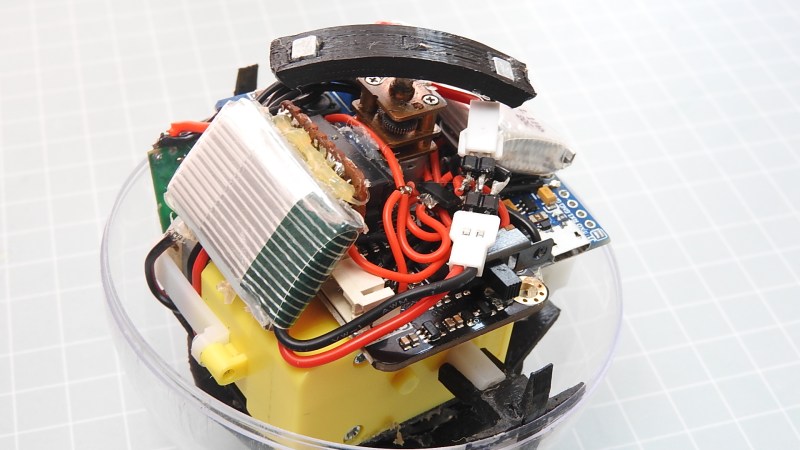The cool thing about the droids of Star Wars is that they’re not that hard to recreate in real life. R2-D2 is a popular choice, but you can even build yourself a neat little BB-8 if you’re so inclined. [Piyush] has built a particularly compelling example that’s transparent, which lets you see the internals and how it all works.
The build makes creative use of a pair of Christmas ornaments. They are perhaps the cheapest and easiest way to source a clear plastic sphere. One serves as the “head”, while the other serves as the larger spherical body. Inside, an Arduino Pro Micro is running the show. It’s hooked up to a L293D motor driver which runs the drive motors and the reaction wheel motor which provides stability, while a separate MOSFET is on hand to run the gear motor which controls the head.
There’s also an HC-05 module for Bluetooth communication, and a BNO055 sensor for motion tracking and ensuring the robot stays the right way up. 3D printed components are used prodigiously to cram everything together tightly enough to fit. There’s even a printed charging base to juice up the little droid. Controlling the robot is as simple as using a smartphone with an app created in the MIT App Inventor.
If you’ve never built a spherical rolling robot before—and few of us have—this design is a great reference for your own work. We’ve seen a few BB-8s over the years, most of which dropped shortly after the movie was released.
















Eww, sequel trilogy.
1000x better than the prequel trilogy.
Only if you are delusional
:DD The BNO055 I2C implementation violates the I2C protocol in some circumstances. This causes it not to work well with certain chip families. It does not work well with Espressif ESP32, ESP32-S3, and NXP i.MX RT1011, and it does not work well with I2C multiplexers.
I wonder if anyone has ever home-built a C-3P0…
One guy did, but then he got asthma and killed a bunch of people.
The force is strong In this one.
Sadly, it’s the new format. You were never meant to watch this video on a monitor; you were meant to watch it on another phone.
I often-ed wondered where dumb style of video came from. Now I know. I thought it was just a ‘fad’ of some sort.